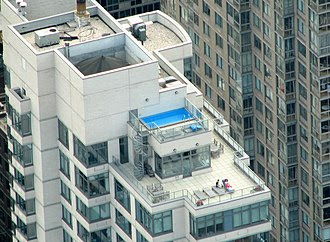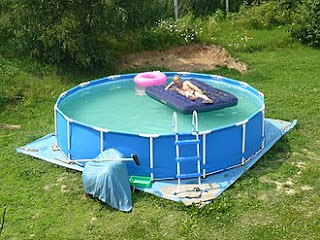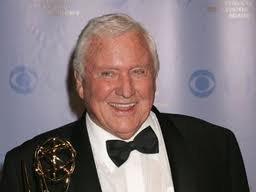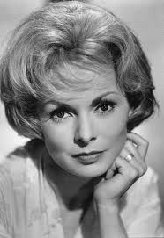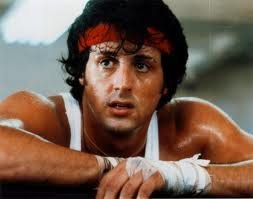
A swimming pool, swimming bath, wading pool, paddling pool, or simply pool, is a structure designed to hold water to enable swimming or other leisure activities. Pools can be built into the ground (in-ground pools) or built above ground (as a freestanding construction or as part of a building or other larger structure), and may be found as a feature aboard ocean-liners and cruise ships. In-ground pools are most commonly constructed from materials such as concrete, natural stone, metal, plastic,composite or fiberglass, and can be of a custom size and shape or built to a standardized size, the largest of which is the Olympic-size swimming pool.
Many health clubs, fitness centers, and private clubs have pools used mostly for exercise or recreation. It is common for municipalities of every size to provide pools for public use. Many of these municipal pools are outdoor pools but indoor pools can also be found in buildings such as natatoriums and leisure centers. Hotels may have pools available for their guests to use at their own leisure. Pools as a feature in hotels are more common in tourist areas or near convention centers. Educational facilities such as high schools and universities sometimes have pools for physical education classes, recreational activities, leisure, and competitive athletics such as swimming teams. Hot tubs and spas are pools filled with water that is heated and then used for relaxation or hydrotherapy. Specially designed swimming pools are also used for diving, water sports, and physical therapy, as well as for the training of lifeguards and astronauts. Swimming pools most commonly use chlorinated water, or salt water, and may be heated or unheated.
History
Pre-modern
The "Great Bath" at the site of Mohenjo-Daro in modern-day Pakistan was most likely the first swimming pool, dug during the 3rd millennium BC. This pool is 39 by 23 feet, is lined with bricks, and was covered with a tar-based sealant.
Ancient Greeks and Romans built artificial pools for athletic training in the palaestras, for nautical games and for military exercises. Roman emperors had private swimming pools in which fish were also kept, hence one of the Latin words for a pool was piscina. The first heated swimming pool was built by Gaius Maecenas in his gardens on the Esquiline Hill of Rome, likely sometime between 38 and 8 BC. Gaius Maecenas was a wealthy imperial advisor to Augustus and considered one of the first patrons of arts.
Ancient Sinhalese built a pair of pools called "Kuttam Pokuna" in the kingdom of Anuradhapura, Sri Lanka, in the 6th century AD. They were decorated with flights of steps, punkalas or pots of abundance, and scroll design.
19th century
Swimming pools became popular in Britain in the mid-19th century. As early as 1837, six indoor pools with diving boards existed in London, England. The Maidstone Swimming Club in Maidstone, Kent is believed to be the oldest surviving swimming club in Britain. It was formed in 1844, in response to concerns over drownings in the River Medway, especially since would-be rescuers would often drown because they themselves could not swim to safety. The club used to swim in the River Medway, and would hold races, diving competitions and water polo matches. The South East Gazette July 1844 reported an aquatic breakfast party: coffee and biscuits were served on a floating raft in the river. The coffee was kept hot over a fire; club members had to tread water and drink coffee at the same time. The last swimmers managed to overturn the raft, to the amusement of 150 spectators.
The Amateur Swimming Association was founded in 1869 in England, and the Oxford Swimming Club in 1909. The presence of indoor baths in the cobbled area of Merton Street might have persuaded the less hardy of the aquatic brigade to join. So, bathers gradually became swimmers, and bathing pools became swimming pools. In 1939, Oxford created its first major public indoor pool at Temple Cowley.
The modern Olympic Games started in 1896 and included swimming races, after which the popularity of swimming pools began to spread. In the US, the Racquet Club of Philadelphia clubhouse (1907) boasts one of the world's first modern above-ground swimming pools. The first swimming pool to go to sea on an ocean liner was installed on the White Star Line's Adriatic in 1906. The oldest known public swimming pool in the U.S., Underwood Pool, is located in Belmont, Massachusetts.
World's largest pool....
Interest in competitive swimming grew following World War I. Standards improved and training became essential. Home swimming pools became popular in the United States after World War II and the publicity given to swimming sports by Hollywood films such as Esther Williams' Million Dollar Mermaid made a home pool a desirable status symbol. More than 50 years later, the home or residential swimming pool is a common sight. Some small nations enjoy a thriving swimming pool industry (e.g., New Zealand pop. 4,116,900 – holds the record in pools per capita with 65,000 home swimming pools and 125,000 spa pools).
A two-story, white concrete swimming pool building composed of horizontal cubic volumes built in 1959 at the Royal Roads Military College is on the Registry of Historic Places of Canada.
Roof top pool....
Private pools
Private pools are usually smaller than public pools, on average 12 ft × 24 ft to 20 ft × 40 ft whereas public pools usually start at 66 ft. Home pools can be permanently built-in, or be assembled above ground and disassembled after summer. Privately owned outdoor pools in backyards or gardens started to proliferate in the 1950s in regions with warm summer climates, particularly in the United States with desegregation. A plunge pool is a smaller, permanently installed swimming pool, with a maximum size of approximately 10 ft × 20 ft.
If you want to read more, go here: https://en.wikipedia.org/wiki/Swimming_pool
- 1 2/3 cups all-purpose flour
- 1 teaspoon baking powder
- 1/2 teaspoon salt
- 1/2 cup shortening
- 1 1/2 cups sugar, divided
- 2 eggs, beaten
- 1/2 cup milk
- 1/2 cup chopped walnuts
- 1 tablespoon lemon zest
- 2 tablespoons lemon juice
- Preheat oven to 350º. Coat a 9- x 5-inch loaf pan with cooking spray.
- In a small bowl, combine the flour, baking powder, and salt; set aside.
- In a large bowl, cream together the shortening and 1 cup sugar. Add the eggs. Then add the milk and dry ingredients and blend until smooth. Add walnuts and lemon zest.
- Pour mixture into loaf pan and bake about 1 hour or until a toothpick inserted in center comes out clean. Remove from oven.
- In a small bowl, mix the remaining sugar with the lemon juice. Pour over bread and serve warm.
1927 – Janet Leigh, American actress (d. 2004)
1946 – Sylvester Stallone, American actor




